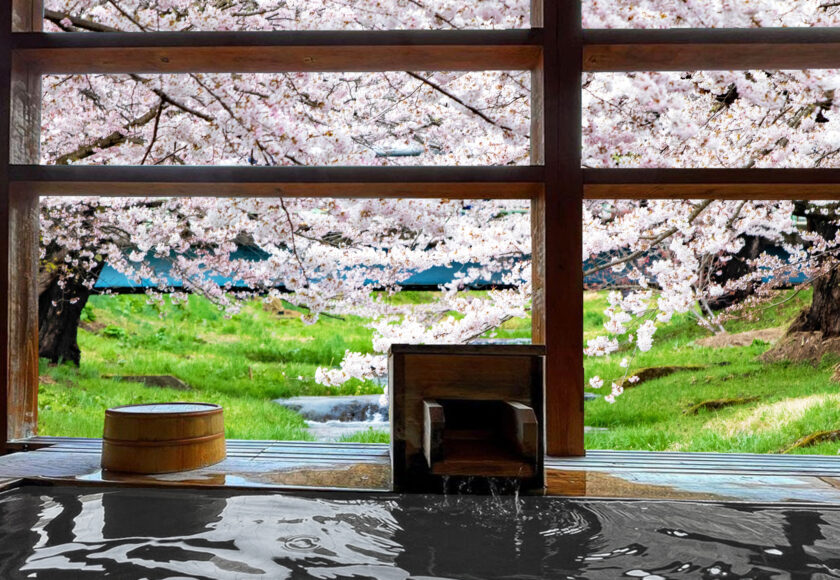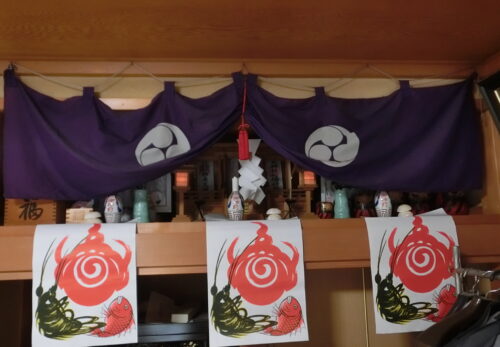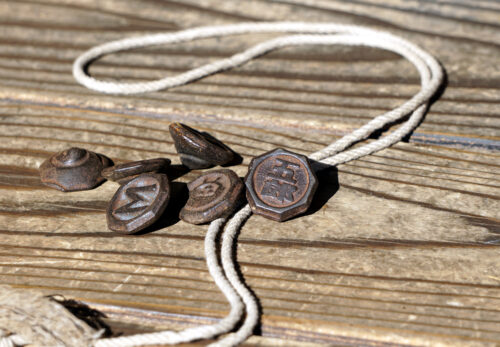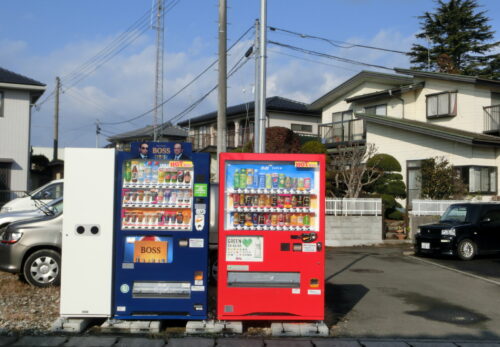Cultural Significance of Japanese Bathing
Explore the historical and cultural significance of bathing in Japan
Bathing has played an important role in Japanese culture for centuries, and is deeply intertwined with the country’s history and traditions. Japanese bathing rituals can be traced back to ancient times, when people believed that water had purifying properties and that bathing could cleanse both the body and the soul.
One of the earliest forms of Japanese bathing was called yuya, which involved heating stones in a fire and then pouring water over them to create steam. This practice was particularly popular in the countryside, where people did not have access to running water or sophisticated bathing facilities.
Over time, bathing rituals in Japan became more refined and elaborate. By the 8th century, public bathhouses called sento had become popular in urban areas, and were considered important social gathering places. Sento were typically gender-segregated, and people would go there not only to bathe, but also to socialize, relax, and even do business.
In the 12th century, Japanese nobility began building private baths called ofuro, which were often made of wood and heated with charcoal. Ofuro became a symbol of wealth and luxury, and were typically only accessible to the aristocracy.
Today, Japanese bathing culture continues to be a source of pride and fascination for many people in Japan and around the world. While public bathhouses are not as common as they once were, they still hold an important place in Japanese society, and many people enjoy taking a relaxing soak in an ofuro bathtub at the end of a long day.
Overall, the historical and cultural significance of bathing in Japan cannot be overstated. From ancient yuya rituals to modern-day ofuro baths, bathing has been a central part of Japanese life for centuries, and continues to play an important role in the country’s culture and traditions.
Why many Japanese people take pride in their cleanliness and daily bathing rituals
Many Japanese people take pride in their cleanliness and daily bathing rituals due to cultural and social reasons.
Firstly, cleanliness has long been valued in Japanese culture. In Shintoism, the indigenous religion of Japan, water is seen as a purifying agent that can cleanse impurities from the body and soul. This belief is also reflected in traditional Japanese customs, such as removing shoes before entering a home or temple, and washing hands before meals. For many Japanese people, bathing is a natural extension of this desire for cleanliness and purity.
In addition, Japanese society places a strong emphasis on conformity and social harmony. In this context, personal hygiene and cleanliness are seen as important ways to contribute to the well-being of the community as a whole. Japanese people are taught from a young age to take responsibility for their own cleanliness and hygiene, and to be considerate of others by maintaining a clean and tidy appearance.
Furthermore, bathing is also considered an important aspect of self-care and relaxation in Japan. Many Japanese people see bathing as a way to relieve stress and refresh their minds and bodies after a long day. This is particularly true for those who live in crowded urban areas, where personal space and privacy are limited.
Overall, the cultural and social values placed on cleanliness, conformity, and self-care have contributed to the importance of daily bathing rituals in Japanese society. By taking pride in their personal hygiene and cleanliness, many Japanese people are able to maintain a sense of community and social harmony, as well as promote their own physical and mental well-being.
Traditional Ofuro Bathtubs
The features and benefits of traditional ofuro bathtubs
Traditional ofuro bathtubs are an important part of Japanese bathing culture, and are prized for their unique features and benefits.
One of the most notable features of ofuro bathtubs is their design. Traditionally made from wood, these bathtubs are often handcrafted and can take months to build. The wood is carefully chosen for its durability, resistance to water damage, and ability to retain heat. The natural materials used in their construction also give ofuro bathtubs a warm, earthy aesthetic that is highly valued in Japanese design.
Another key feature of ofuro bathtubs is their size. Unlike western-style bathtubs, which are often designed for lying down, ofuro bathtubs are deep and narrow, allowing the bather to sit upright with their knees bent. This design not only conserves water, but also allows the bather to immerse their entire body in the hot water, providing a more intense and therapeutic soaking experience.
The benefits of soaking in an ofuro bathtub are numerous. The hot water helps to relax muscles and relieve tension, while the deep immersion allows for better blood flow and circulation. Many people also find that soaking in an ofuro helps to promote better sleep and reduce stress and anxiety.
In addition, ofuro bathtubs are often heated using traditional methods, such as burning wood or using gas stoves. This not only adds to the aesthetic appeal of the bathtub, but also provides a natural and sustainable source of heat.
Overall, the unique design and materials used in traditional ofuro bathtubs, as well as their therapeutic benefits, make them a highly valued and cherished part of Japanese bathing culture.
Provide tips for using an ofuro bathtub effectively
Using an ofuro bathtub effectively requires a few simple tips to ensure a relaxing and therapeutic soaking experience:
- Prepare the water temperature: Traditional ofuro bathtubs are typically heated to around 40-42 degrees Celsius. However, the ideal temperature may vary depending on personal preference and the time of year. It’s important to take the time to adjust the water temperature to your liking before getting in.
- Take a shower first: It is customary to take a shower before entering an ofuro bathtub in Japan. This is to ensure that the bathtub remains clean and hygienic. Taking a quick shower will also help to open up your pores and prepare your body for the soaking experience.
- Enter the bathtub slowly: Ofuro bathtubs are deeper and narrower than western-style bathtubs, so it’s important to enter slowly and carefully. Sit down and carefully slide your legs into the hot water before fully immersing your body.
- Relax and soak: Once you’re in the bathtub, take the time to relax and soak for at least 10-15 minutes. This will allow your muscles to fully relax and help promote better blood circulation.
- Stay hydrated: It’s important to stay hydrated while soaking in an ofuro bathtub, as the hot water can cause dehydration. Drink water or tea while soaking to ensure that you stay hydrated.
- Rinse off afterwards: After you’re done soaking, take a quick shower to rinse off any soap or dirt. This will help to keep the bathtub clean and ensure that you’re fully refreshed.
By following these simple tips, you can fully enjoy the therapeutic benefits of soaking in an ofuro bathtub and experience the traditional Japanese bathing culture.
the different types of ofuro bathtubs and their unique features
There are several different types of ofuro bathtubs, each with its own unique features and benefits. Here are some of the most common types of ofuro bathtubs:
- Hinoki wood ofuro: Hinoki is a type of Japanese cypress that is prized for its aroma and natural antibacterial properties. Hinoki wood ofuro bathtubs are known for their beautiful, pale yellow color and their ability to retain heat.
- Cedar wood ofuro: Cedar wood is another popular choice for ofuro bathtubs. Cedar wood is known for its resistance to water damage and its ability to repel insects. Cedar wood ofuro bathtubs often have a reddish-brown color and a distinct, natural wood grain.
- Stainless steel ofuro: Stainless steel ofuro bathtubs are a more modern take on the traditional wooden ofuro. They are durable, easy to clean, and can be heated quickly using electricity or gas.
- Stone ofuro: Stone ofuro bathtubs are made from natural stone, such as granite or marble. They are heavy and difficult to move, but they have a unique and luxurious aesthetic that is highly prized.
- Copper ofuro: Copper ofuro bathtubs are another modern take on the traditional wooden ofuro. They are made from high-quality copper and are often hammered or etched to create a unique texture.
Each type of ofuro bathtub has its own unique features and benefits, and the choice often comes down to personal preference and budget. Traditional wooden ofuro bathtubs are still the most popular and highly valued, but modern options like stainless steel and copper ofuro are becoming more popular due to their convenience and durability.
Public Bathhouses: Sento and Onsen
Describe the differences between sento and onsen
Sento and onsen are both types of public baths in Japan, but there are some key differences between the two.
Sento:
- Sento are public baths that are typically located in urban areas, such as cities and towns.
- The water in sento is heated and filtered, and may contain additives like herbs and minerals for therapeutic purposes.
- Sento are often less expensive than onsen, and are open to the public for a small admission fee.
- Sento may have different types of baths, such as hot water, cold water, and electric baths. Some may also have saunas or steam rooms.
- Sento are often seen as a communal gathering place for locals to socialize and relax.
Onsen:
- Onsen are natural hot springs that are typically located in rural areas, such as mountains and forests.
- The water in onsen comes from geothermally heated springs and is believed to have therapeutic benefits due to its mineral content.
- Onsen are often more expensive than sento, and may require a reservation or overnight stay at a ryokan (traditional Japanese inn).
- Onsen may have indoor and outdoor baths, and may be surrounded by beautiful natural scenery.
- Onsen are often seen as a place for relaxation and rejuvenation, and may be part of a larger wellness experience that includes massage, meditation, and other activities.
Overall, the main differences between sento and onsen are their location, water source, and overall experience. Sento are more accessible and affordable, while onsen are often more luxurious and remote. Both offer a unique and culturally significant bathing experience in Japan.
The benefits of visiting a public bathhouse
Visiting a public bathhouse in Japan, whether it’s a sento or an onsen, can have a variety of benefits for both physical and mental health. Here are some of the key benefits:
- Relaxation: Bathing in hot water can help relax the muscles and alleviate tension in the body, which can help promote a sense of calm and relaxation.
- Improved circulation: The heat from the bath can help dilate blood vessels, which can improve circulation throughout the body and promote better overall health.
- Skin care: Many public bathhouses offer different types of baths, such as saltwater baths or herbal baths, which can have beneficial effects on the skin. Bathing in hot water can also help open up pores and promote detoxification.
- Pain relief: The heat and buoyancy of the water can help relieve muscle and joint pain, as well as alleviate symptoms of conditions like arthritis and fibromyalgia.
- Socialization: Public bathhouses in Japan are often seen as a communal gathering place, where locals can socialize and connect with others in their community.
- Cultural experience: Visiting a public bathhouse in Japan can be a unique cultural experience, offering a glimpse into traditional Japanese customs and values.
Overall, visiting a public bathhouse in Japan can offer a range of physical and mental health benefits, as well as a unique cultural experience. Whether it’s a quick trip to a local sento or a longer stay at an onsen resort, public bathhouses can be a valuable part of a wellness routine for many people.
Provide tips for first-time visitors and etiquette to follow
If you’re a first-time visitor to a public bathhouse in Japan, it’s important to follow certain etiquette and customs to ensure a respectful and enjoyable experience. Here are some tips to keep in mind:
- Bring your own towels: Most public bathhouses in Japan do not provide towels, so it’s important to bring your own. You’ll need one small towel to use as a washcloth and another larger towel to dry off with.
- Remove your shoes: Before entering the bathhouse, you’ll need to remove your shoes and place them in a designated area. You may be given slippers to wear while inside.
- Pay the admission fee: You’ll need to pay the admission fee, which is usually around 500 to 1000 yen, depending on the bathhouse. Some may also offer discounts for students, seniors, or groups.
- Separate facilities: Most public bathhouses have separate facilities for men and women, so be sure to go to the correct side. Some may also have specific times for men and women to use the facilities together.
- Undress in the changing area: Once inside, you’ll need to undress completely in the designated changing area before entering the baths. Some may have lockers to store your belongings, while others may have baskets or shelves.
- Clean yourself before entering the baths: Before entering the baths, you’ll need to thoroughly clean yourself using the provided shower stations and stools. This is to ensure that the baths remain clean and hygienic for all users.
- Be quiet and respectful: Public bathhouses in Japan are often seen as a place for relaxation and meditation, so it’s important to be quiet and respectful while inside. Avoid loud talking or splashing, and be mindful of others around you.
- Follow the rules: Each bathhouse may have its own specific rules and customs, so be sure to read any signs or instructions carefully and follow them accordingly.
By following these tips and observing proper etiquette, you can ensure a respectful and enjoyable experience when visiting a public bathhouse in Japan.
Health Benefits of Japanese Bathing
Discuss the various health benefits associated with Japanese bathing, such as improving circulation and reducing stress
Japanese bathing practices are not only a cultural tradition but also provide numerous health benefits. Here are some of the benefits associated with Japanese bathing:
- Improved circulation: Bathing in hot water can increase blood flow and circulation, which helps to deliver oxygen and nutrients to the body’s tissues. This can promote healing and reduce the risk of cardiovascular disease.
- Stress reduction: Bathing in hot water can also help to reduce stress and promote relaxation. The warm water can help to soothe muscles and alleviate tension, while the peaceful environment of a Japanese bathhouse can be a calming retreat from daily life.
- Pain relief: Bathing in hot water can also help to alleviate muscle and joint pain. The heat can increase blood flow to the affected area, which helps to reduce inflammation and promote healing.
- Improved skin health: Bathing in hot water can help to open up pores and remove impurities from the skin. The heat can also help to improve skin elasticity and promote a healthy, youthful appearance.
- Respiratory benefits: The steam generated by hot water can help to open up the airways and alleviate symptoms of respiratory illnesses, such as asthma or bronchitis.
- Improved sleep: Bathing in hot water before bed can help to promote relaxation and improve sleep quality. The warm water can help to lower body temperature and promote feelings of calmness and relaxation.
Overall, Japanese bathing practices provide numerous health benefits that can improve physical and mental wellbeing. By incorporating these practices into your daily routine, you may experience improved circulation, reduced stress, pain relief, and many other health benefits.
Provide examples of scientific research on the topic
There have been several scientific studies conducted on the health benefits of Japanese bathing practices. Here are a few examples:
- Improved circulation: A study published in the Journal of Cardiology found that bathing in hot water can significantly increase blood flow and improve endothelial function, which is essential for maintaining healthy blood vessels and preventing cardiovascular disease.
- Stress reduction: A study published in the International Journal of Behavioral Medicine found that bathing in hot water can reduce stress and promote relaxation. The study found that participants who took a hot bath before bed experienced improved sleep quality and reduced feelings of stress and fatigue.
- Pain relief: A study published in the Journal of Alternative and Complementary Medicine found that soaking in hot water can help to relieve chronic pain. The study found that participants who used a hot tub for 30 minutes a day for three weeks experienced significant reductions in pain and improved physical function.
- Improved skin health: A study published in the International Journal of Cosmetic Science found that bathing in hot water can improve skin hydration and elasticity. The study found that participants who took a 10-minute bath in 40°C water experienced significant improvements in skin hydration and elasticity compared to those who took a shower.
Overall, these studies suggest that Japanese bathing practices can provide significant health benefits, including improved circulation, stress reduction, pain relief, and improved skin health. While more research is needed to fully understand the mechanisms behind these benefits, the evidence suggests that incorporating Japanese bathing practices into your routine may be a beneficial way to improve your health and wellbeing.
Modern Japanese Bathing Culture
Discuss how modern technology has influenced Japanese bathing culture
Modern technology has had a significant influence on Japanese bathing culture, particularly in terms of the design and functionality of bathtubs and bathhouses. Here are a few examples:
- Automated bathtubs: Many modern Japanese bathtubs are equipped with automated features, such as temperature control and water jets. These features allow users to customize their bathing experience to their preferences, making it more comfortable and convenient.
- Electronic control systems: Some Japanese bathhouses now use electronic control systems to regulate the temperature and water flow in their baths. This allows for more precise control over the bathing experience and ensures that the water is always at the optimal temperature for maximum comfort and relaxation.
- High-tech materials: Modern bathtubs and bathhouses often use high-tech materials, such as heat-retaining ceramics and non-slip surfaces, to enhance the bathing experience and ensure safety.
- Digital communication: Some Japanese bathhouses now offer digital communication services, such as WiFi and charging stations, to allow visitors to stay connected while they bathe.
- Innovative designs: Modern technology has also enabled the development of innovative bathtub designs that incorporate traditional Japanese elements with modern functionality. For example, some bathtubs feature built-in seats and backrests, while others are designed to maximize space efficiency.
Overall, modern technology has enabled Japanese bathing culture to evolve and adapt to changing preferences and lifestyles. While traditional elements of Japanese bathing, such as ofuro bathtubs and sento bathhouses, still hold cultural significance, modern technology has allowed for new and innovative ways to enhance the bathing experience and promote relaxation and wellbeing.
Describe the features and benefits of high-tech bathtubs
High-tech bathtubs are designed to provide an enhanced and customized bathing experience. Here are some of the features and benefits of high-tech bathtubs:
- Automated temperature control: Many high-tech bathtubs have a built-in thermostat that regulates the water temperature, ensuring that it stays at a consistent level throughout the bathing experience. This allows for a more comfortable and relaxing experience, as users do not have to worry about adjusting the water temperature manually.
- Massage jets: High-tech bathtubs often feature built-in massage jets that provide a soothing and therapeutic massage. These jets can be adjusted to target specific areas of the body, providing a customizable massage experience.
- Air jets: In addition to massage jets, some high-tech bathtubs also have air jets that release bubbles into the water. This creates a relaxing and therapeutic experience that can help to relieve stress and tension.
- Chromatherapy: Some high-tech bathtubs incorporate chromatherapy, which uses colored lights to promote relaxation and wellbeing. The lights can be programmed to change colors, creating a calming and soothing environment.
- Aromatherapy: Some high-tech bathtubs also incorporate aromatherapy, which uses scents to promote relaxation and wellbeing. The bathtub may have a built-in diffuser that releases essential oils into the air, providing a therapeutic experience.
- Built-in sound systems: Some high-tech bathtubs also feature built-in sound systems, allowing users to listen to music or sounds while they bathe. This can create a calming and relaxing environment, promoting stress relief and relaxation.
Overall, high-tech bathtubs are designed to provide an enhanced and customizable bathing experience. By incorporating features such as automated temperature control, massage and air jets, chromatherapy, aromatherapy, and built-in sound systems, high-tech bathtubs offer a unique and relaxing experience that can promote relaxation and wellbeing.
Discuss the role of bathing in contemporary Japanese society
Bathing continues to play an important role in contemporary Japanese society. While the traditional public bathhouses and hot springs (onsen) remain popular, modern lifestyles have led to an increased use of private baths in homes and hotels.
Bathing is seen as a way to relax and de-stress after a long day at work or school. Many people in Japan have a daily bathing ritual, using it as a time to unwind and wash away the day’s stresses. This focus on cleanliness and personal hygiene is deeply ingrained in Japanese culture and is seen as a way to show respect for oneself and others.
In addition to its relaxation benefits, bathing is also viewed as a form of health and wellness. Many Japanese believe that regular bathing can help to improve circulation, boost the immune system, and promote overall wellbeing. This belief is supported by scientific research, which has shown that bathing in hot water can have a positive effect on various health conditions.
In contemporary Japanese society, high-tech bathtubs have become increasingly popular, offering a range of features to enhance the bathing experience. These bathtubs often include massage jets, chromatherapy, aromatherapy, and other features designed to promote relaxation and wellbeing.
Overall, bathing remains an important aspect of Japanese culture and society, valued for its relaxation, health, and cleanliness benefits. While the way people bathe may have evolved with modern technology and lifestyle changes, the importance of the ritual itself remains deeply ingrained in Japanese culture.
Conclusion
This article explores the historical and cultural significance of bathing in Japan and discusses how modern technology has influenced Japanese bathing culture. It provides an overview of the different types of Japanese baths, including ofuro bathtubs, sento, and onsen. The article also discusses the benefits of Japanese bathing, including stress relief and improved circulation, and provides tips for first-time visitors to public bathhouses. Finally, it discusses the role of high-tech bathtubs in contemporary Japanese society and emphasizes the continuing importance of bathing in Japanese culture.
In conclusion, the article highlights the enduring importance of bathing in Japanese culture, both as a way to promote relaxation and health and to show respect for oneself and others. It emphasizes the unique features and benefits of traditional Japanese baths and the ways in which modern technology has enhanced the bathing experience. The article recommends that visitors to Japan try a public bathhouse or hot spring to experience the full range of Japanese bathing traditions and encourages readers to consider the benefits of regular bathing for their own health and wellbeing.
You can enjoy Japanese bath → japanese bath salts










No comments yet.